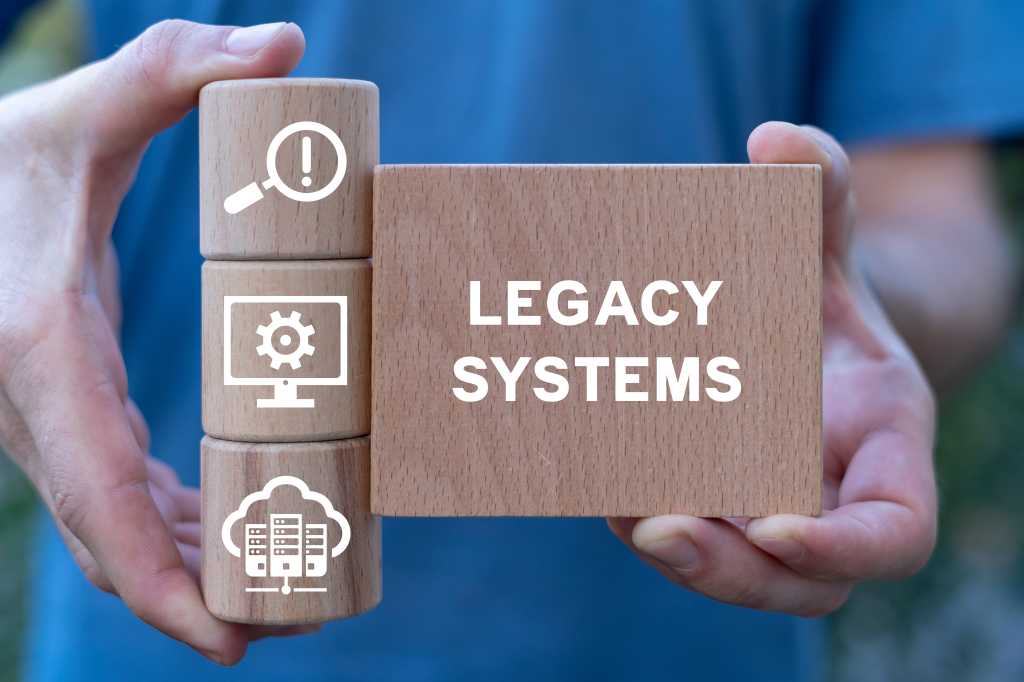During my career I have developed a few mottos. For example, my change management motto is, “Humans prefer the familiar to the comfortable and the comfortable to the better.” Thus, to help humans embrace the better, I need to make the better both familiar and comfortable.
To recognize technical debt, my smart aleck motto is, “Technical debt is something I did more than five years ago or something that someone else did more than six months ago.”
The topics of technical debt recognition and technology modernization have become more important as the pace of technology change – first driven by social, mobile, analytics, and cloud (SMAC) and now driven by artificial intelligence (AI) – increases. At a time when technology innovation cycles are getting shorter, we will struggle to keep pace if we have to navigate around legacy systems that act as barriers to speed and agility.
I once inherited a legacy ERP system that was so old that anytime we attempted to upgrade one of the systems that communicated with the ERP system, the ERP would break. Over time the speed and agility barriers associated with the ERP spread to other systems as they, in turn, formed an expanding wave of technical debt.
I suspect that most organizations have some level of technical debt, but how do we deal with and modernize our legacy systems? This is the process I use:
- Build an inventory of existing systems: Scan, survey, search for, and document what is in your technology portfolio.
- Assess the existing systems: On the basis of degree of difficulty, which are the potential candidates for modernization? Which are obsolete? Which are not longer an architectural fit? Which are a nightmare to support? Which require rare skills?
- Prioritize the list of candidates based on the potential value of the modernization: To what extent does each modernization candidate get in the way of technology and organizational speed, agility and innovation?
- Evaluate the level of effort to modernize the systems: Before building your modernization plans and road map, you need to understand what modernization each candidate will require.
- Determine the best approach to modernization: For each prioritized modernization candidate, you need to understand which approach makes the most sense. This step introduces the concept of the “R” and “D” approach of modernization.
| The “R” Approach | The “D” Approach |
| Replace (with something new) | Decouple/decompose and replace the decoupled/decomposed elements |
| Retire (but do not replace) | Decouple/decompose and retire the decoupled/decomposed elements |
| Retain but contain (no enhancements or improvements) | Decouple/decompose and retain but contain the decoupled/decomposed elements |
| Retain but fix (just enough to keep it alive) | Decouple/decompose and fix the decoupled/decomposed elements |
| Retain but refactor/enhance | Decouple/decompose and refactor/enhance the decoupled/decomposed elements |
The “Ds” of modernization can be important if the modernization candidate is complex. The “Ds” define ways to “divide and conquer” the modernization candidate. For example, a legacy, expensive, and difficult-to-support system runs on proprietary hardware that runs a proprietary operating system, database, and application. The application leverages functionality in the database so it is difficult to decouple the application and database. However, it is possible to run the database and application on an open source operating system and commodity hardware. By decoupling the database and application from the operating system, the company can modernize the rest of the stack, reduce operating costs, and avoid the challenge of the increasingly rare skills needed to support the operating system and hardware.
- Define, communicate, and implement a modernization road map: It is common for modernization to require an ongoing commitment. Remember my definition of technical debt: something I did more than five years ago or something someone else did more than six months ago. The evolution of technology (and providers) requires a modernization road map that shows not only what is needed now but the ongoing, longer-range modernization needs. This shifts the organization’s thinking for modernization as an event — or a crisis — to an activity that keeps the organization’s technology fresh and never a barrier to speed and agility.
We are entering a new phase of digital transformation — this one driven by AI in all its forms. This phase brings with it rapid changes in technologies, processes, and roles. In this environment it is critical that technology leaders reduce the footprint of and remove the legacy systems that are difficult to change, do not fit with future architectures, and that trend toward obsolescence. Legacy modernization is a strategic imperative, and technology leaders must persistently allocate resources, attention, and plans to enable it. In addition, technology leaders must exert the influence needed to ensure that the entire organization understands and supports the delivery of the modernization road map.
Learn more about IDC’s research for technology leaders OR subscribe today to receive industry-leading research directly to your inbox.
International Data Corporation (IDC) is the premier global provider of market intelligence, advisory services, and events for the technology markets. IDC is a wholly owned subsidiary of International Data Group (IDG Inc.), the world’s leading tech media, data, and marketing services company. Recently voted Analyst Firm of the Year for the third consecutive time, IDC’s Technology Leader Solutions provide you with expert guidance backed by our industry-leading research and advisory services, robust leadership and development programs, and best-in-class benchmarking and sourcing intelligence data from the industry’s most experienced advisors. Contact us today to learn more.
Niel Nickolaisen is an adjunct research advisor for IDC’s IT Executive Programs (IEP). He is considered a thought leader in the use of Agile principles to improve IT delivery. And he has a passion for helping others deliver on what he considers to be the three roles of IT leadership: enabling strategy, achieving operational excellence, and creating a culture of trust and ownership.

